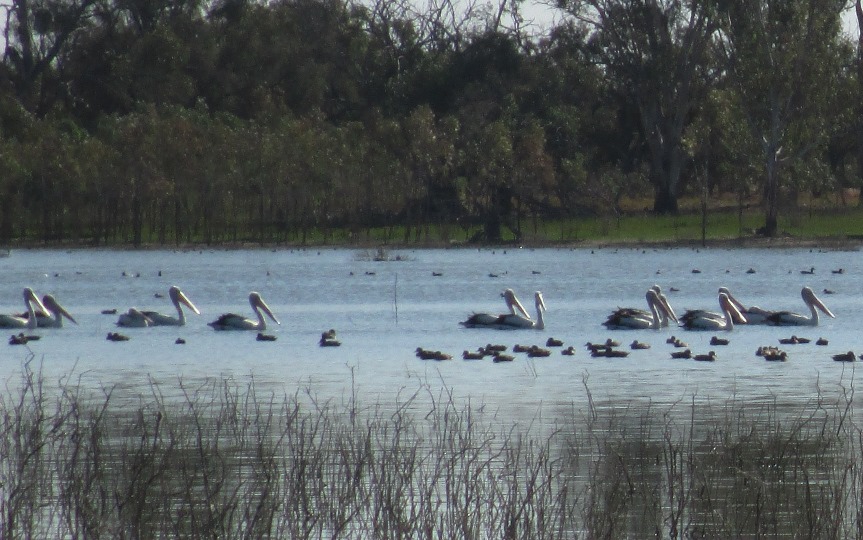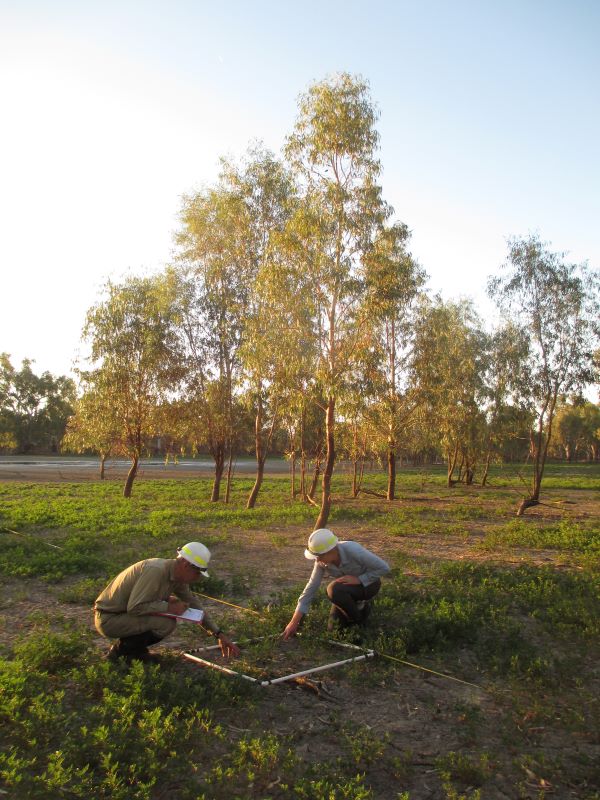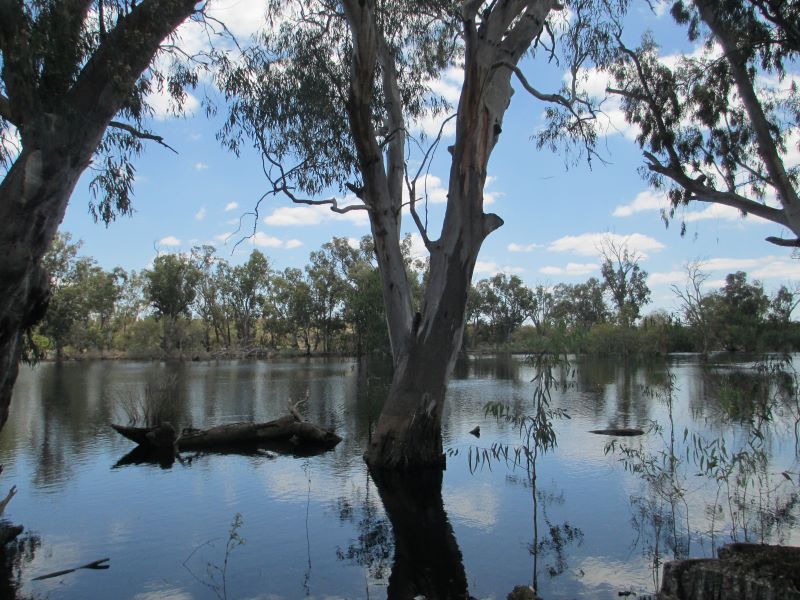Hattah Lakes, in the Hattah-Kulkyne National Park in north-western Victoria, are a refuge for flora and fauna in an otherwise semi-arid landscape. To support the health of key water dependant plant communities, an environmental watering program began in 2005. However, informed decisions about how much water to deliver, and when, require accurate predictions of how vegetation might respond to watering events. This can be difficult in complex systems such as semi-arid floodplains and wetlands, as plant abundance varies widely and plant growth can be slow yet is highly influenced by seasonal conditions. The quality of predictive models is also influenced by the amount and type of data that have been collected from the relevant communities.
ARI has been monitoring the response of three plant communities (Lake Bed wetlands, River Red Gum and Black Box woodlands) to environmental watering to assess the success of the program and inform future water deliveries. A range of ecological questions and analyses are being explored. For example, do plant species differ in their response to a range of different water regimes? How is this response reflected in plant functional groups (e.g. water dependant herbs)? Monitoring so far has covered three large environmental watering events that have been delivered over a seven-year period.
A unique aspect of this work has been the development of a complex statistical model to investigate vegetation responses to environmental watering. Three unique features of the model are that it:
- investigates vegetation responses at multiple scales from individual species to vegetation types in one analysis.
- incorporates the influences of rainfall and flooding during different seasons
- investigates the current environmental water regime and indicates outcomes that are likely to have occurred without environmental water management.
The model shows that environmental watering at Hattah Lakes has led to:
- An increase in native water-dependent plants and functional groups
- An increase in eucalypt recruitment
- A decline in dryland plant encroachment onto the floodplain
- A decline in herbaceous weeds

Overall, the monitoring program has demonstrated that environmental watering events are maintaining and improving the water dependent semi-arid floodplain plant communities of the Hattah Lakes. In addition, we found that plant functional group responses were driven by a few dominant species. This highlights the importance of monitoring both individual species as well as functional groups to obtain an accurate assessment of plant community responses to environmental watering.
A range of rare and threatened plants have been detected throughout the project, including some new records for Hattah Lakes, and Victoria (e.g. Winged Plains-bush Pluchea rubelliflora), reinforcing the importance of these plant communities for biodiversity conservation. ARI is continuing to investigate vegetation responses to capture future watering events and further improve the model.
This work is occurring through the following project partners: DELWP, Victorian Environmental Water Holder and The Living Murray Intervention Monitoring Program on behalf of the Mallee Catchment Management Authority. The Living Murray is a joint initiative funded by the New South Wales, Victorian, South Australian, Australian Capital Territory and Commonwealth governments, coordinated by the Murray-Darling Basin Authority.
For more information contact: claire.moxham@delwp.vic.gov.au or sally.kenny@delwp.vic.gov.au
See the following fact sheets and journal articles for more results and analysis :
- Plant responses to environmental watering at Hattah Lakes fact sheet (PDF, 876.1 KB)
(accessible version (DOCX, 4.4 MB)) - Water for the environment benefits rare plants at Hattah Lakes fact sheet (PDF, 981.0 KB)
(accessible version (DOCX, 3.6 MB)) - Demonstrating and predicting plant responses to environmental watering fact sheet (PDF, 659.5 KB)
(accessible version (DOCX, 2.1 MB)) - Moxham, C., Stajsic, V., Kenny, S.A., Bennetts, K., Sutter, G., Sluiter, I. and Cameron, D. (2019) Pluchea rubelliflora and Pterocaulon sphacelatum (Asteraceae): new to Victoria’s semi-arid floodplains. Muelleria 37: 119-126
- Moxham, C., Kenny, S.A., Beesley, L.S., Gwinn, D.C. (2018) Large-scale environmental flow results in mixed outcomes with short-term benefits for a semi-arid floodplain plant community. Freshwater Biology
- Kenny, S.A., Moxham, C. and Sutter, G. (2017) The response of rare floodplain plants to an environmental watering event at Hattah Lakes, Victoria. Victorian Naturalist 134 (1):19-27
Page last updated: 09/03/21

